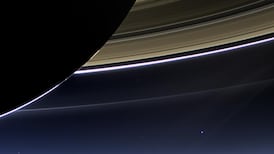This week sees the peak of the most spectacular meteor showers of the year.
Look northeast after 11pm on the nights of August 11th and 12th, and chances are that after a few minutes a shooting star or two will zip across the sky. Trace their paths backward and you will find that they appear to come from the constellation Perseus, the hero at the centre of one of the most famous sky myths.
The Perseids in mid-August are associated with comet Swift-Tuttle, which last visited the inner solar system in 1992.
That distinct link is because comets have been likened to dirty snowballs – though “icy dirtballs” is probably more apt. Their fragile nature means copious amounts of material is lost as a comet nears the Sun and its nucleus heats up. Dust streams out in the familiar tail and spreads around the comet’s orbit, being added to on each successive lap.
Occasionally the Earth fords one of those trails and we get a shower, with several dozen meteors per hour seen as we plough through the denser parts. Most meteors you see are caused by grains less than a gram in weight being vaporised due to friction as they collide at high speed with our upper atmosphere. The streak of light marks the final moments of each particle.
Depending on your observing site, expect to see a meteor at least every couple of minutes on the nights of Perseid maximum. Although the particles travel in parallel through space, the effect of perspective means they appear to radiate from a point in a particular constellation, giving a shower its name. The Perseid radiant can be found just above the northeastern skyline at 11pm and will climb higher as the night goes on.
A good trick is to look a little away from the source towards Pegasus or Cassiopeia as it is towards those parts of the sky the meteors generally appear to flare. That is where to point your camera too – with a bit of luck, and a few time exposures, you will catch a falling star.
The Perseids are often nicknamed the Tears of St Lawrence after the saint who was martyred on August 10th, AD 258. Other references tie the Perseids to the flaming spear hurled by the Celtic god Lugh, whose festival of Lughnasa falls during August.
Sweeping the sky with binoculars you will stumble across many lovely loops and chains of suns, with none more charming than the Coathanger star cluster, found in the constellation Vulpecula. The group is an asterism, or chance arrangement of unrelated stars making up a familiar pattern. The Plough, or Big Dipper, is the most famous asterism on a larger scale, being part of the constellation Ursa Major.
Through binoculars, the reason for the Coathanger’s moniker is obvious, with six stars in a straight line and the hook formed by four more. Also catalogued as Collinder 399, or Brocchi’s Cluster, its members are now known to lie at different distances – though there was considerable debate about that prior to Europe’s astrometry satellite Hipparcos getting accurate measurements for the individual stars in the 1990s.
To find the Coathanger just draw a line from Albireo marking the beak of Cygnus, the Swan, towards the vanes of diminutive Sagitta, the Arrow. The cluster falls within your binocular field of view as you trace that line and is sure to become a firm favourite as you explore the summer sky.
Venus is rising nearly four hours before the Sun during August and dominates the morning sky. The planet presently shows a tiny half-phase for telescope users. Early risers will see the waning crescent Moon near Venus on the 15th.
Mars peeks over the eastern horizon just after 11.30pm at the beginning of August but you will see it from 10pm onwards by the end of the month. Mars is a bright orange ember easily outshining the dim stars of Pisces where it currently lies.
Slow-moving Jupiter and Saturn are both in the south-eastern sky as soon as darkness falls. The Moon is to Jupiter’s lower right on the 28th and near Saturn the night after.
The moon is at last quarter on the 11th, new on the 19th, and at first quarter on the 25th.
Morning sky passes of the ISS start from the last week of August. It is not visible from Ireland at any other stage this month, but at this time of year you can see a great number of other satellites going over.
Some can flare unexpectedly, while others may vary in brightness as different reflective sides are presented. Predictions for the ISS, Starlink passes, any other satellites can be gleaned from www.heavens-above.com
John Flannery (@theskybyeye) is a long-time amateur astronomer with an interest in the history and lore of the sky along with astronomical phenomena observable with the unaided eye.










